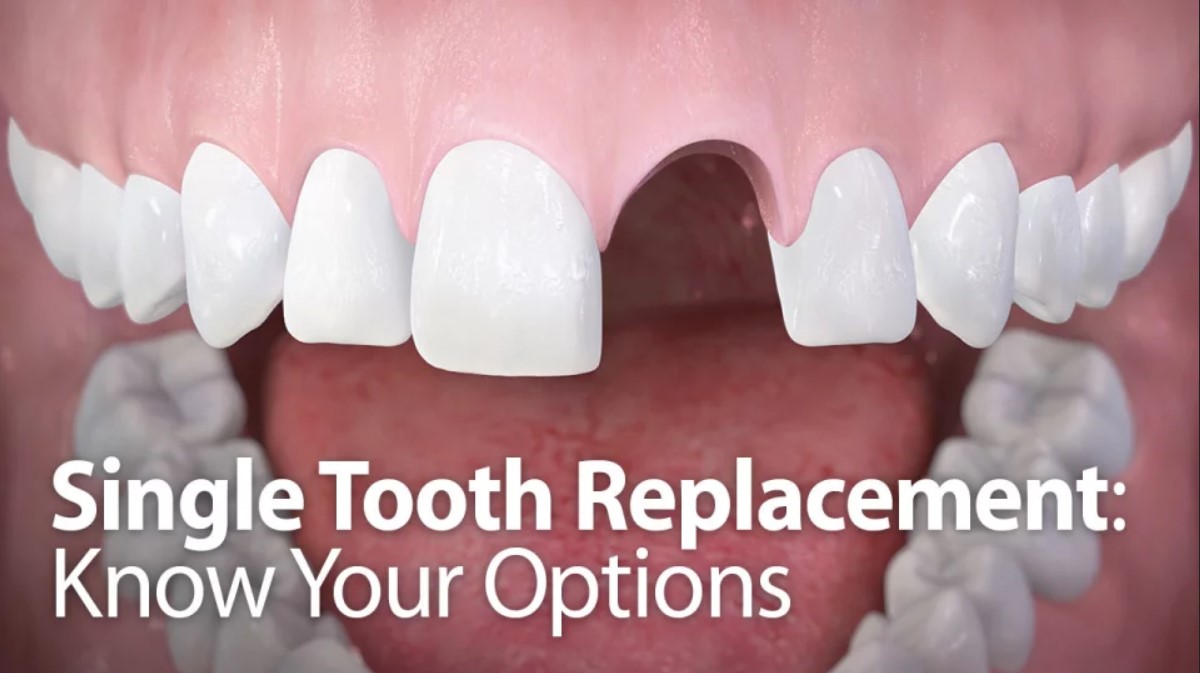Single Tooth Replacement: Know Your Options

No one wants to interact through life with a visibly missing tooth. It’s less appealing when you speak and laugh and makes it harder to speak and eat. Shockingly, the average adult between 35 to 49 years in Australia is missing at least seven teeth. It’s highly likely that you or someone close have lost teeth and need to replace them.
This guide offers the three best tooth replacement options.
Removable partial denture
This is one of the simplest replacement options for missing teeth. It’s also the least expensive option. A removable partial denture is designed to replace one or more teeth in the same arch. It’s a fake tooth with a gum-coloured base attached to a metal frame that’s inserted snugly between your natural teeth.
Despite being popular, there are some downsides to partial dentures. Since they are hooked onto existing natural teeth, they tend to pressure them, which can loosen other teeth over time. Besides, the surface of dentures may feel different from your natural teeth and may need you to adjust when eating and speaking. As you age, your mouth may undergo bone loss from the pressure from the denture and need to be remade to fit better.
Bridgework
A dental bridgework is a suitable option when you have lost a tooth, and the gap is causing other teeth to become loose. A bridge typically consists of crowns on either side of the missing teeth or natural teeth supporting the pontic (artificial tooth).
There are four main types of bridges:
- Traditional fixed bridge – this is the most common bridge consisting of two or more crowns and a filler tooth. The bridges are made of metal, porcelain, or ceramics.
- Cantilever bridge – with this bridge, the pontic connects to just one abutment tooth. It’s mainly used for people with teeth on just one side of the gap.
- Maryland dental bridge – this type of bridge works well for missing front teeth. It consists of porcelain fused to metal or ceramic teeth with wings on each side of the bridge to bond to existing teeth.
- Implant-supported bridge – this one is similar to a traditional bridge, but instead of being supported to the teeth, it’s supported by implants.
Although bridges can last for a decade, there are some disadvantages. Due to the extra stress placed on healthy teeth to fit the bridgework, they can loosen over time. Bridgework is also linked to tooth canal problems, tooth decay, and gum disease.
Dental Implants
This is a longer-lasting alternative that could last a lifetime with proper care. The procedure doesn’t rely on other teeth for support. Instead, it’s inserted directly into the jawbone in a painless surgical procedure.
Small titanium posts are drilled and fused into the bone itself to provide support and look just like your own teeth. The dental implant procedure has a success rate of 95% and can last often last the rest of your life. The downside with this method is that it costs more than the alternative initially, but it’s the most cost-effective option over time.
Conclusion
If a missing tooth affects how you talk, eat, and smile, there are a variety of teeth replacement options available to you. If you need more advice, talk to our dentist at Springvale Dental Clinic to know which option is right for you.



